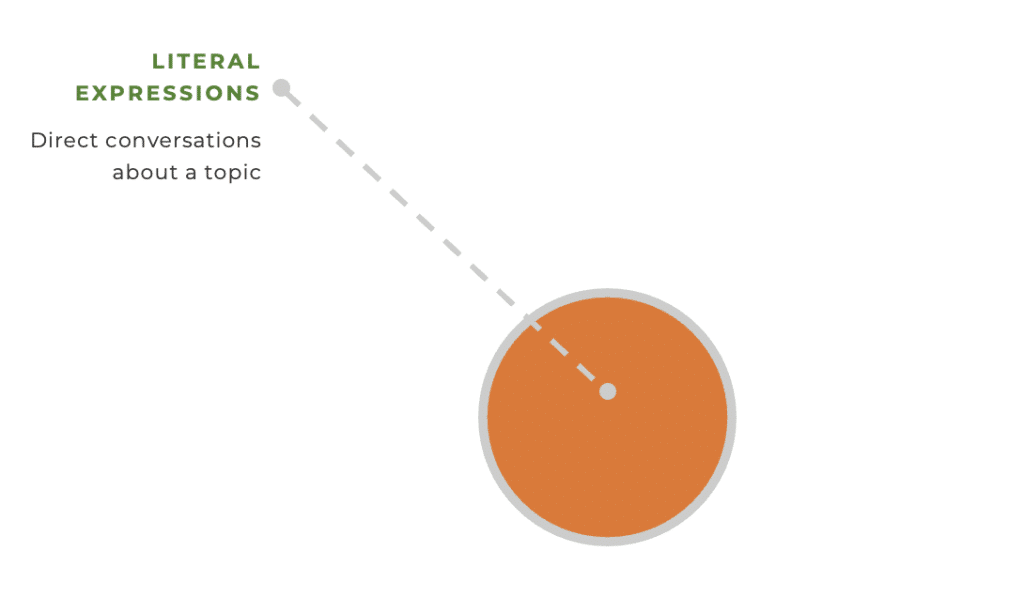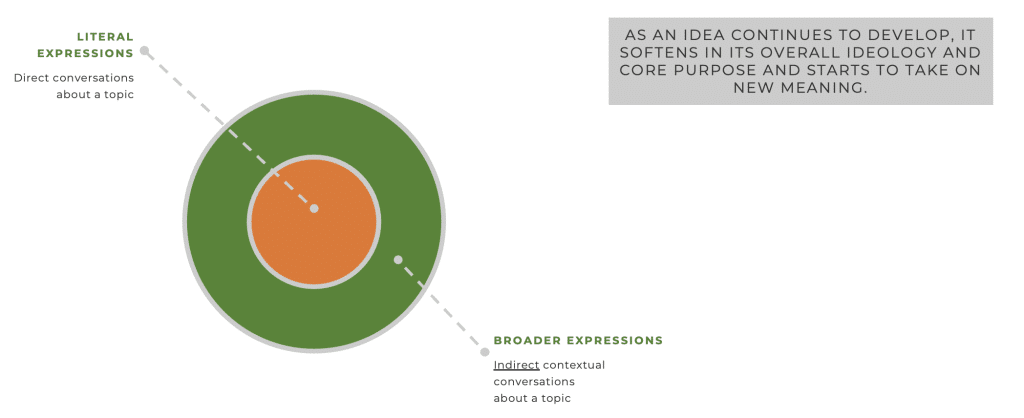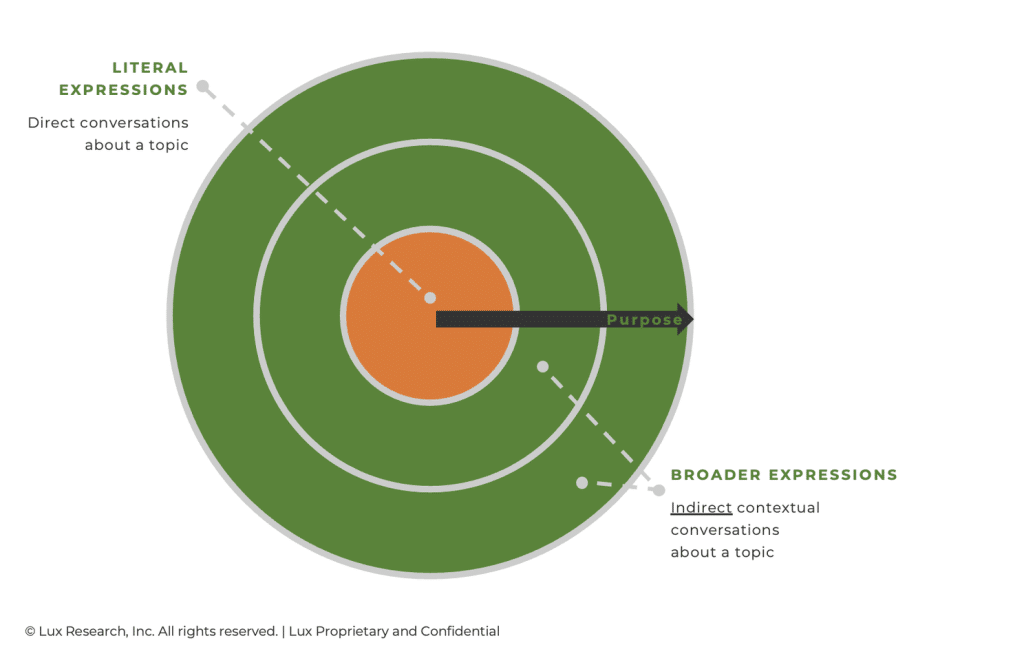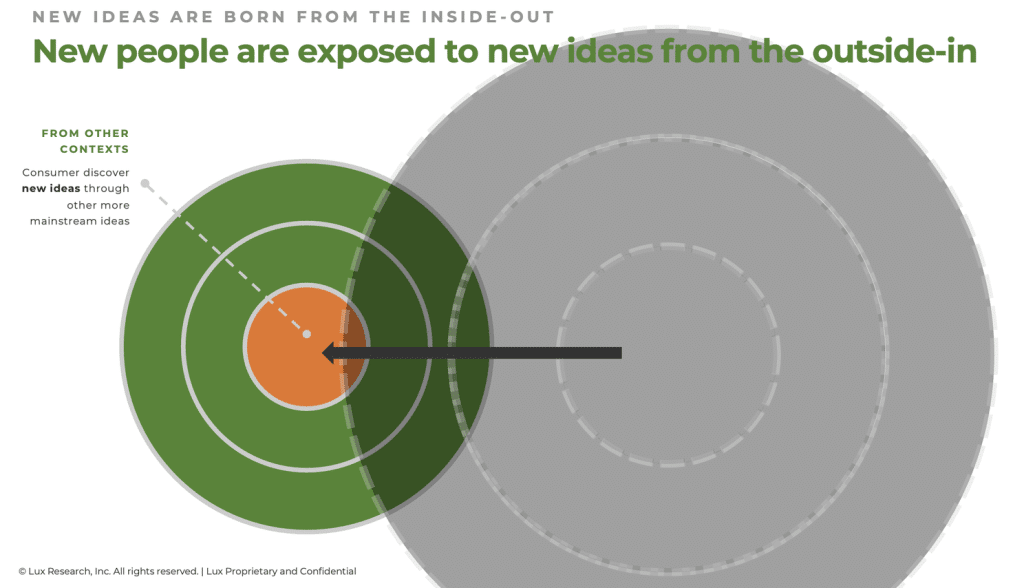In our quest to understand the genesis of innovation, we must first grapple with a more fundamental question: How is culture created? Or, more precisely, how do we, as humans, assign meaning to new ideas within our cultural landscape?
Consider the evolution of modern fair trade coffee culture as an example. When the concept of fair trade coffee first emerged, it was a niche idea, championed by a small group of consumers who were deeply concerned about the fair treatment of coffee growers. These early adopters discussed the idea in very literal terms, infusing it with a rich ideological underpinning. At this nascent stage, the idea was raw, unrefined, and brimming with a sense of purpose that was as yet untempered by broader societal interpretation.

THE EVOLUTION OF AN IDEA
As the idea of fair trade coffee matured, it underwent a fascinating transformation. Its initial ideology, once rigid and unyielding, began to soften. The core purpose, which was once sharply defined, started to blur around the edges. This is a crucial phase in the life cycle of an idea, where literal expressions start to give way to broader, more indirect contextual conversations. The original ideology, while still present, begins to soften, making room for new interpretations and meanings.

In the case of fair trade coffee, the conversation expanded from the fair treatment of growers to the quality of the coffee itself. Consumers began to realize that by taking care of the farmers and paying attention to how things were grown, we could also produce superior coffee that tasted better and expanded our palate.
EXPANSION: ATTRACTING NEW AUDIENCES AND GAINING A WIDER PURPOSE
What’s intriguing is that as the idea expands from its literal roots to broader expressions, it doesn’t lose its purpose. Instead, it gains a new one. This new purpose, much like the idea itself, is broader, more inclusive, and capable of resonating with a wider audience.

As the idea of fair trade coffee continued to evolve and expand, it began to intersect with other ideas. This intersection is not a mere coincidence but a testament to the idea’s growing influence. It’s at this juncture that the idea begins to attract new audiences. People, who might not have been interested in the original concept, are now drawn to it because of its connections with other ideas they are familiar with.
THE BIRTH OF INNOVATION PLATFORMS
This expansion and intersection of ideas give rise to broad platforms that can set the stage for a decade of innovation. As an idea expands, it not only gains a new purpose but also begins attracting newer people because it starts to intersect with other ideas. People learn about new ideas through the lens of other ideas they are already familiar with.

In the case of fair trade coffee, this evolution gave birth to modern cafes focused on tasting notes and a wine-like culture in coffee. Eventually, this expanded to the mass market, with major Quick Service Restaurants and Hotels adopting fair trade practices to improve their coffees.
In essence, an idea develops from the inside out, while new people discover it from the outside in. This dynamic interplay between the evolution of an idea and the way it is discovered and adopted by people is what shapes our culture and drives innovation.
Understanding this process is not just an intellectual exercise. It’s a roadmap for innovators, a guide to how ideas can be nurtured, evolved, and expanded to create platforms for innovation. It’s a testament to the power of consumers in shaping the future of innovation.
